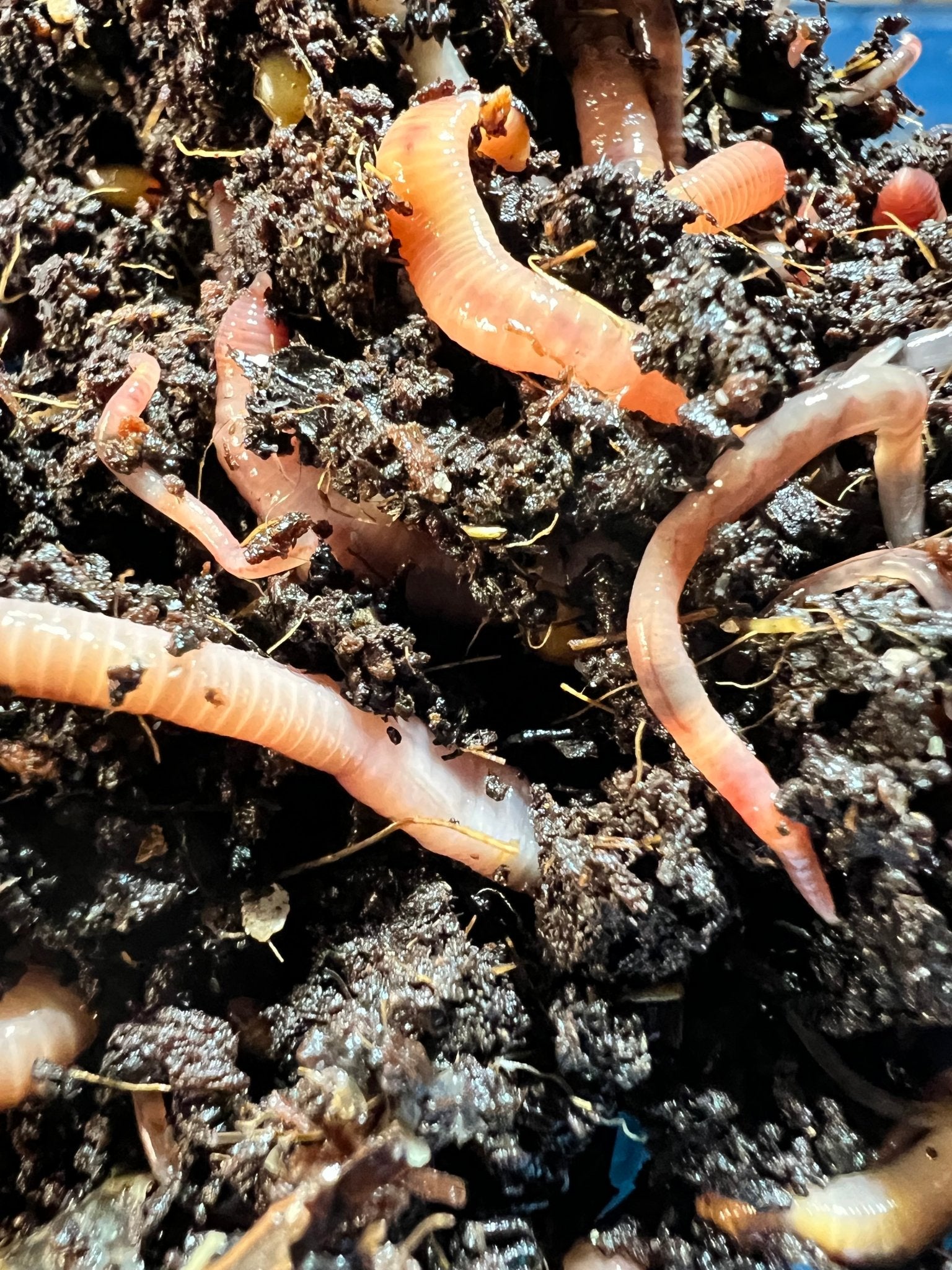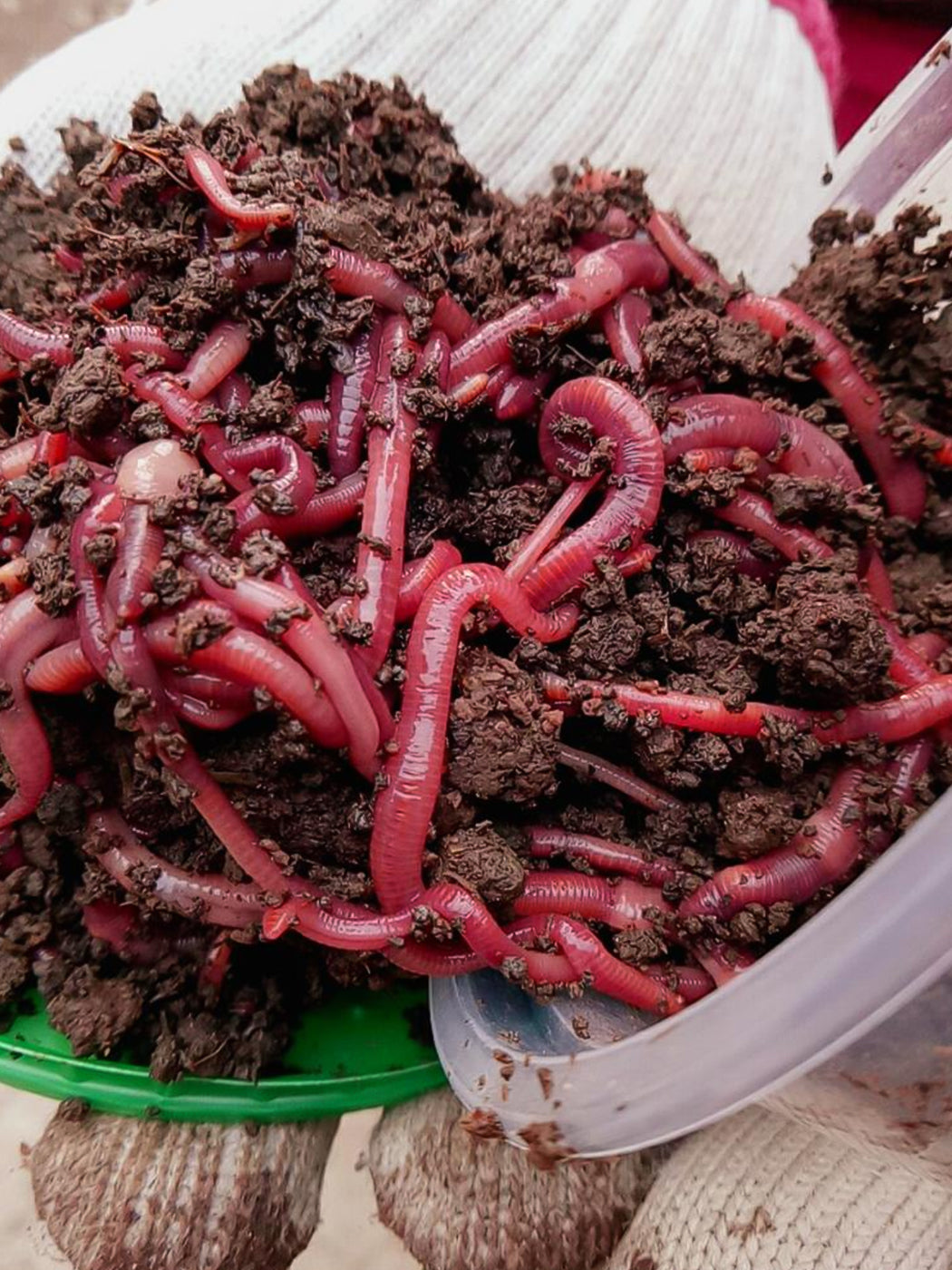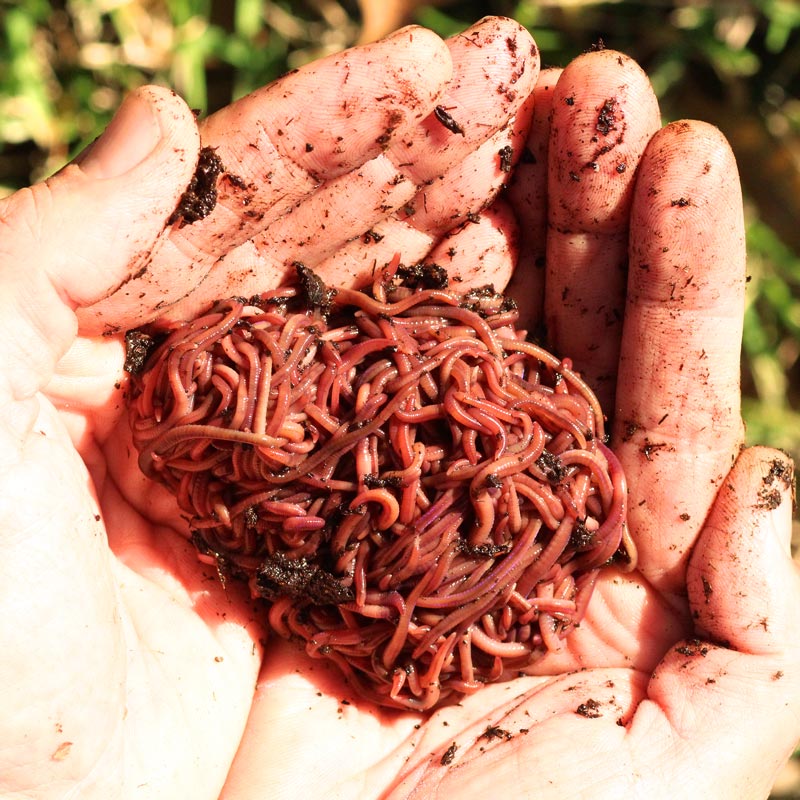Comprehensive Lawn Care Services from Red Wiggler Express
Comprehensive Lawn Care Services from Red Wiggler Express
Blog Article
Red Wigglers: The Unsung Heroes of Organic Waste Recycling
Red wigglers, or Eisenia fetida, offer as essential representatives in the organic waste recycling process, transforming thrown out products into beneficial vermicompost. As the globe progressively seeks remedies to battle waste accumulation and enhance agricultural performance, comprehending the function of these worms ends up being crucial.
What Are Red Wigglers?
The impressive strength of red wigglers, medically understood as Eisenia fetida, underscores their critical function in organic waste recycling. These little, reddish-brown earthworms are generally located in disintegrating raw material, such as compost heaps and manure loads. Lake Hickory Bait. Unlike other earthworm species, red wigglers thrive in nutrient-rich atmospheres and are highly effective at breaking down natural products, making them important for vermicomposting

(Red Wiggler Express)In enhancement to their duty in waste reduction, red wigglers add to dirt health by enhancing soil framework and oygenation through their tunneling tasks (Lake Hickory Bait). Their visibility in composting systems not only enhances decay prices yet likewise promotes a sustainable strategy to waste management, illustrating their value in eco-friendly preservation efforts
Benefits of Composting With Worms
Composting with worms, especially red wigglers, offers numerous advantages that enhance both waste administration and soil wellness. These worms effectively damage down organic waste, transforming it right into nutrient-rich vermicompost that enhances soil. This process increases disintegration, permitting for a much faster recycling of cooking area scraps and various other natural products contrasted to standard composting techniques.
In addition, the vermicompost produced by red wigglers is including advantageous microorganisms, which help enhance dirt structure, aeration, and moisture retention. This boosts the overall health of plants, advertising energetic growth and increased returns in yards and farming settings. Additionally, the use of worms in composting decreases the manufacturing of greenhouse gases, such as methane, adding to a much more sustainable waste monitoring system.

How to Begin Vermicomposting
Developing a vermicomposting system is a simple procedure that can yield significant benefits for both waste administration and soil enrichment. To begin, select a suitable container, such as a plastic bin or wooden box, with appropriate air flow openings to make sure appropriate air flow. The measurements should ideally be around 2 feet by 3 feet, allowing adequate space for the worms to thrive.
Next, prepare bedding material, which can contain shredded newspaper, cardboard, or coconut coir. This bedding ought to be moistened to create an appropriate environment for the worms. Once the bedding remains in area, present red wigglers (Eisenia fetida) into the bin, usually around one pound of worms for each square foot of surface area.
Complying with the positioning of worms, include organic waste, such as vegetables and fruit scraps, coffee grounds, and crushed eggshells. Stay clear of visit the website adding dairy, meat, or oils, as these can create smells and bring in bugs. Lastly, position the bin in a shaded, temperature-controlled location to preserve ideal problems for worm task. With these actions, you will successfully start a vermicomposting system that adds to lasting waste administration and enriches your dirt.
Keeping a Healthy Worm Container
(Red Wiggler Express)Maintaining a worm bin growing needs normal focus and treatment to ensure the wellness of the red wigglers and the efficiency of the composting procedure. Correct upkeep begins with keeping track of the dampness degrees; the bin must be damp however not waterlogged. A great guideline is to preserve an uniformity similar to a wrung-out sponge.
Aeration is vital. Gently mixing the bed linens and food scraps every few weeks prevents compaction and makes certain that all worms have access to oxygen. Furthermore, it is very important to feed the worms properly. A well balanced diet plan of vegetables and fruit scraps, coffee grounds, and crushed eggshells must be offered in moderation to stay clear of overfeeding, which can lead to odors and bugs.
Temperature guideline is an additional vital aspect. Red wigglers thrive in a variety of 55 to 77 levels Fahrenheit. If the container comes to be also warm or cold, the worms may end up being worried - Lake Hickory Bait. Regularly inspect for signs of health, such as worm population growth and the presence of healthy castings. By diligently managing these factors, one can keep a durable and effective worm container.
Influence On Sustainable Living
The successful upkeep of a worm container not only benefits the wellness of red wigglers however likewise contributes significantly to lasting living methods. By reusing organic waste, such as kitchen scraps and yard particles, red wigglers assist divert considerable amounts of material from land fills. This decrease in waste not only lowers greenhouse gas exhausts however also minimizes the ecological concern related to waste monitoring.
In addition, the castings produced by red wigglers act as a nutrient-rich organic plant food, boosting dirt health and advertising plant growth. This all-natural option to chemical fertilizers sustains sustainable farming and gardening methods, minimizing dependence on artificial inputs that can hurt ecosystems. In addition, worm composting fosters understanding of waste administration, motivating individuals and areas to adopt more lasting practices.

Final Thought
In recap, red wigglers work as important factors to natural waste reusing via their reliable decomposition of organic materials. Their capability to create nutrient-rich vermicompost improves dirt health and wellness and sustains lasting farming methods. By integrating vermicomposting into waste management techniques, individuals and neighborhoods can substantially minimize waste while promoting environmental sustainability. The duty of Eisenia fetida in cultivating healthy and balanced environments highlights the value of these microorganisms in attaining lasting living and improving soil fertility.
Report this page